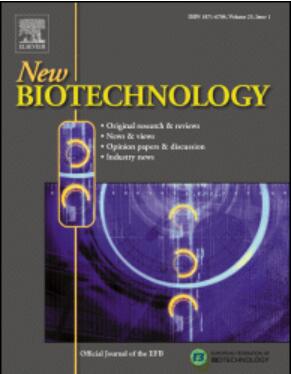Lactobacillus salivarius HHuMin-U attenuates vulvovaginal candidiasis via vaginal epithelial immune enhancement mediated by NF-κB activation
IF 4.9
2区 生物学
Q1 BIOCHEMICAL RESEARCH METHODS
引用次数: 0
Abstract
Vulvovaginal candidiasis (VVC), primarily caused by Candida albicans infection, is one of the most common diseases among women and leads to various symptoms that adversely impact quality of life. VVC is conventionally treated with antifungal agents, but the high recurrence rates and the risk of inducing vaginal microbiome dysbiosis pose major concerns in effective treatment. Probiotics with immune-enhancing properties can be an effective strategy by strengthening mucosal immunity and reducing susceptibility to infection. Herein, this study investigates the therapeutic potential of Lactobacillus salivarius HHuMin-U (HMU) as a probiotic agent for treating VVC. Phenotype screening identified HMU as a top candidate with antifungal activity against C. albicans. HMU significantly upregulated immunomodulatory factors such as antimicrobial peptides, cytokines, and chemokines in human vaginal epithelial cells, which can strengthen the antifungal immune system. In an animal study, administration of HMU in a mouse VVC model significantly decreased the fungal burden and protected the mice from vaginal infection. Additionally, cellular infection models revealed that HMU reduced fungal adhesion and the cytolytic activity of C. albicans, while conditioned media from HMU-treated epithelial cells inhibited fungal growth. Transcriptomic analysis revealed that HMU treatment enriched gene sets related to epithelial barrier integrity, innate immune responses mediated by epithelial cells, and immune cell regulation. Mechanistically, the NF-κB pathway emerged as a key mediator of these responses. Collectively, HMU inhibits VVC by enhancing epithelial immunity and thus could be considered as a probiotic agent for the prevention and treatment of VVC.
唾液乳杆菌HHuMin-U通过NF-κB活化介导的阴道上皮免疫增强,减轻外阴阴道念珠菌病
外阴阴道念珠菌病(VVC)主要由白色念珠菌感染引起,是妇女中最常见的疾病之一,导致各种症状,对生活质量产生不利影响。VVC通常使用抗真菌药物治疗,但高复发率和诱导阴道微生物群失调的风险是有效治疗的主要问题。具有免疫增强特性的益生菌可以通过增强粘膜免疫和降低对感染的易感性而成为一种有效的策略。本研究探讨了唾液乳杆菌HHuMin-U (HMU)作为治疗VVC的益生菌制剂的治疗潜力。表型筛选确定HMU是抗白色念珠菌活性的首选候选。HMU显著上调人阴道上皮细胞中的抗菌肽、细胞因子和趋化因子等免疫调节因子,增强抗真菌免疫系统。在一项动物研究中,在小鼠VVC模型中施用HMU可显著降低真菌负荷并保护小鼠免受阴道感染。此外,细胞感染模型显示,HMU降低了真菌粘附和白色念珠菌的细胞溶解活性,而HMU处理的上皮细胞的条件培养基抑制了真菌的生长。转录组学分析显示,HMU处理丰富了与上皮屏障完整性、上皮细胞介导的先天免疫反应和免疫细胞调节相关的基因集。从机制上讲,NF-κB通路是这些反应的关键中介。综上所述,HMU通过增强上皮免疫来抑制VVC,因此可以认为是预防和治疗VVC的益生菌剂。
本文章由计算机程序翻译,如有差异,请以英文原文为准。
求助全文
约1分钟内获得全文
求助全文
来源期刊

New biotechnology
生物-生化研究方法
CiteScore
11.40
自引率
1.90%
发文量
77
审稿时长
1 months
期刊介绍:
New Biotechnology is the official journal of the European Federation of Biotechnology (EFB) and is published bimonthly. It covers both the science of biotechnology and its surrounding political, business and financial milieu. The journal publishes peer-reviewed basic research papers, authoritative reviews, feature articles and opinions in all areas of biotechnology. It reflects the full diversity of current biotechnology science, particularly those advances in research and practice that open opportunities for exploitation of knowledge, commercially or otherwise, together with news, discussion and comment on broader issues of general interest and concern. The outlook is fully international.
The scope of the journal includes the research, industrial and commercial aspects of biotechnology, in areas such as: Healthcare and Pharmaceuticals; Food and Agriculture; Biofuels; Genetic Engineering and Molecular Biology; Genomics and Synthetic Biology; Nanotechnology; Environment and Biodiversity; Biocatalysis; Bioremediation; Process engineering.
 求助内容:
求助内容: 应助结果提醒方式:
应助结果提醒方式:


